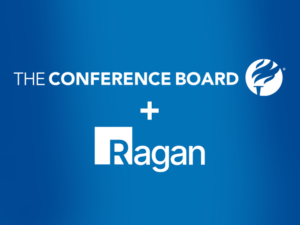These are the skills communications leaders should hire for right now
Three industry leaders share the top comms competencies they look for when hiring, and offer tips for cultivating these skills for practical, long-term success.

The comms needs of organizations today are a world away from those required five years ago, and five years from now, those needs will have only changed more.
Hiring managers seeking to invest in the future of their organizations can prepare for success by seeking out talent with the communications skills required to face the greatest hurdles of today and tomorrow.
We asked comms leaders to offer up their thoughts on the most important strengths and skills to look for in communications talent. Alicia Aebersold, chief communications pfficer at the American Psychological Association; Chelsey Louzeiro, digital community manager at Heifer International; and Matt Ward, head of communications at Corebridge Financial, weighed in:
Data literacy and measurement
Measurement is an eternal pain point for comms departments, and although there is no shortage of solutions, choosing the right one and gleaning the correct insights are more challenging than ever.
“As the profession embraces CommTech and CommTech tools, the ability for communications leaders to interpret data, derive actionable insight, and measure efficacy is going to be the most important skillset within the next five years,” Ward said. “Leaders who get this right will unlock so much value and be able to target their earned, owned, social, and employee engagement activities in a way that is much more bespoke, intentional and impactful.”
Those who can avoid analysis paralysis will be best equipped to succeed, Ward added, through refined, focused messaging, data-backed content strategy and measurable, real-time benchmarking.
Systems thinking
Citing another facet of the analysis gem, both Louzeiro and Aebersold cited systems thinking — the ability to keenly spot connections and dig deep to find the source of challenges, problems and behaviors — as one of the most critical skills for communications professionals.
“We emphasize creativity, excellent writing, and other traditional communication skills but sometimes devalue curiosity, empathy, big-picture thinking and the ability to analyze root causes,” Aebersold said. “I don’t believe it’s an ‘either-or’ equation. Communications experts are strategy experts and systems thinking is central to our success.”
Negotiation
As an offshoot of systems thinking, Louzeiro explained that being a keen negotiator is a must to help communicators control the people, time, funds and decisions they need to perform at their best.
“‘Power’ tends to constantly shift distribution in groups based on four variables: organizational structure, culture, needs of the organization, and urgency,” she said. “Spending time building relationships within the organization benefits communicators, and helps them identify and recognize shifts in power.”
When cultivating this skill, Louzeiro said it’s important to map and build your network and determine your role among your connections. “We all know the power of strong relationships: networks are conduits for information, they create context for cooperation and collaboration, they provide opportunities for deliberate or spontaneous sharing of power,” she said.
She also offered one word of caution: She advises comms leaders not to fall into the habit of “seeing people as objects [or] getting stuck in specific viewpoints.”
AI skills — with a caveat
This is most likely the answer you expected to find when opening this article, and for good reason: AI and machine learning are poised to change communications processes forever.
The ability to effectively and ethically prompt AI text-generation, data-analysis and imaging tools can make comms professionals powerful, future-ready weapons in any company’s arsenal.
But Aebersold cautions communications professionals not to let the thrill of this new technology carry them away.
“I challenge communication professionals to pair their excitement about and interest in this and other technologies with a healthy dose of skepticism,” she said. “The difference between pivotal communication technology and shiny objects is a relentless commitment to measurable communication objectives and a deep understanding of our audiences.”
Curiosity and the motivation to act on it
In terms of “soft” skills, the recurring heartbeat that unites all of the skills above is an insatiable curiosity, and an interest in applying those learnings to actionable outcomes.
Communications is an ever-evolving field, and the most successful professionals will be those who are willing to keep expanding and building upon what they’ve learned, to continually ask questions that will help them and their organizations succeed and to apply insights to practical solutions.
When tailoring your resume for your next comms role or upskilling to snag your next promotion, advancing and elevating these competencies will set you up for success.
However, while the skills above may be at the top of the list for comms hiring managers in the coming year, Louzeiro noted that foundational skills such as writing, problem-solving, active listening, empathy, employee relationship management, project management and moderation skills remain core to roles in this field.
Jess Zafarris is a content director, editor, journalist, speaker, social media engagement strategist and creator. Her 13 years of experience in media have included such roles as the Director of Content at Ragan Communications, Audience Engagement Director at Adweek, and Content Strategy Director and Digital Content Director for Writer’s Digest and Script Mag. Follow her on Twitter/Threads/IG and Tiktok @jesszafaris and connect with her on LinkedIn.







